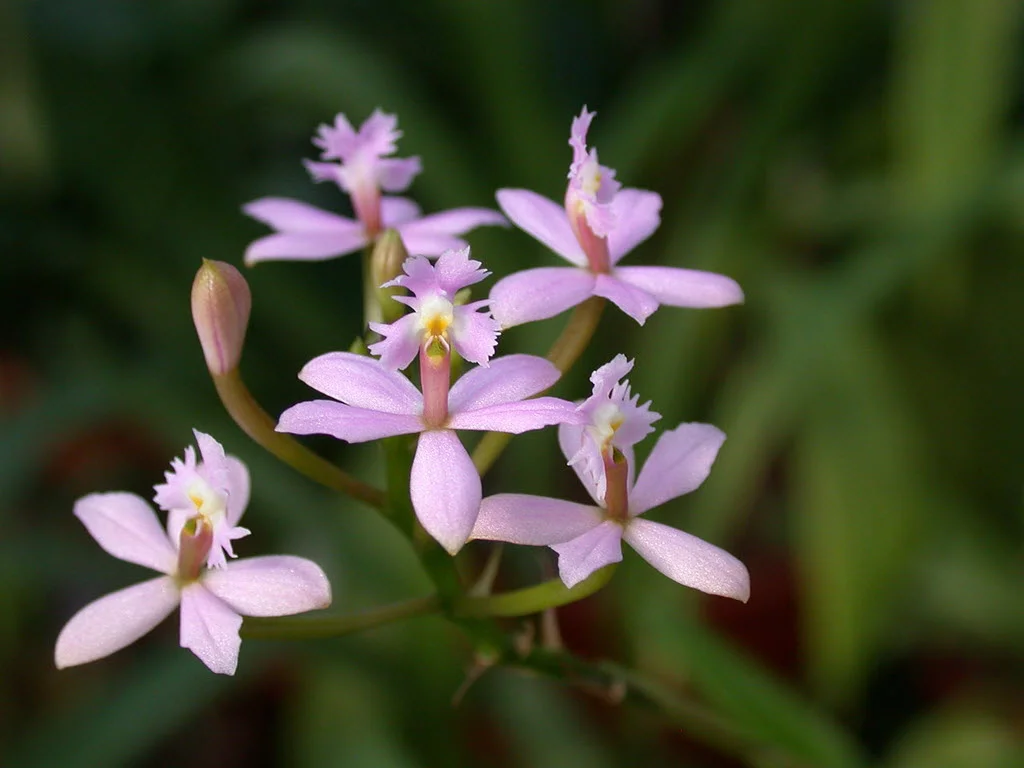Table of Contents
Pronunciation: SA-leen-i-PID-eum
Other Names: Moon Slipper
Introduction
Selenipedium orchids are a very rare orchid genus with six species. These orchids were originally used for vanilla flavoring in their native South America, but this practice fell out of favor due to the difficulty level of cultivating these orchids and its small flower size.
Selenipedium palmifolium
These orchids have a very tall reedy appearance with long stems and thin, long leaves. The foliage varies from deep jeweled green tones to bright yellow-green. They have small flowers that typically come in yellows with white hues, and may have a spotted or striped appearance.
Temperature
Although the exact temperature range for these orchids isn't known, they do tend to do better with warm daytime and nighttime temperatures. They seem to do best with daytime and summer temperatures around 85°F (29°C).
In the early fall and during the night, these orchids like cool temperatures. If it's possible, keep them around 60°F (16°C). They do tolerate very slight temperature fluctuations, but significant temperature changes will lead to damage.
Light
Selenipediums are very picky about the amount of light they receive on a daily basis, and they're prone to scorching or burning in direct sunlight. If you plant them outside, make sure that they're in an area that gets sunlight in the morning and shade in the afternoon. They shouldn't be in direct sunlight.
If the area that they're planted in gets direct sunlight, place shade structures over them to keep them from burning. Netting works very well for this, or if they're in pots, you can move them to more shaded areas when the sun hits its highest point.
Water and Humidity
Selenipedium orchids like clean distilled water. If you have access to rainwater, you'll get the best results. They don't do well with treated water, and they won't tolerate the chemicals that are in tap water. They should stay moist but not soaked because their roots are fragile and prone to diseases.
During the summer months, water your orchids every three or four days, and you can mist them lightly between watering sessions if you're afraid that they're getting too dry. They can be drier in the winter months, and you should only water them once every week. The humidity levels should stay around 50%.
Feeding
Again, you have to be very careful when it comes to fertilizing your Selenipediums because the roots will get chemical burns very easily. You can use any orchid-specific fertilizer mix for these orchids, and dilute it to a rate of one-half of a teaspoon per gallon of water.
Make sure your orchid's roots are moist before you apply the fertilizer mix for extra protection. You'll only have to fertilize these orchids once per month year-round. You can increase this to once every three weeks during the active growth period, but you're in danger of over-fertilizing them.
Potting
You'll get the best results if you pot these orchids in hanging pots or mesh pots, so they get plenty of air to their roots and constant airflow. Your potting mix should consist of one part horticulture sand and one part tree fern with a very small amount of sphagnum moss mixed in.
Layer your potting medium around your orchids and don't pack it around them because this will stop a good airflow from reaching the roots. They don't like to be disturbed once you've planted them, so only repot them when it's absolutely necessary.
Video
See how a Selenipedium fits snugly into one's palm.
See More Orchid Types











